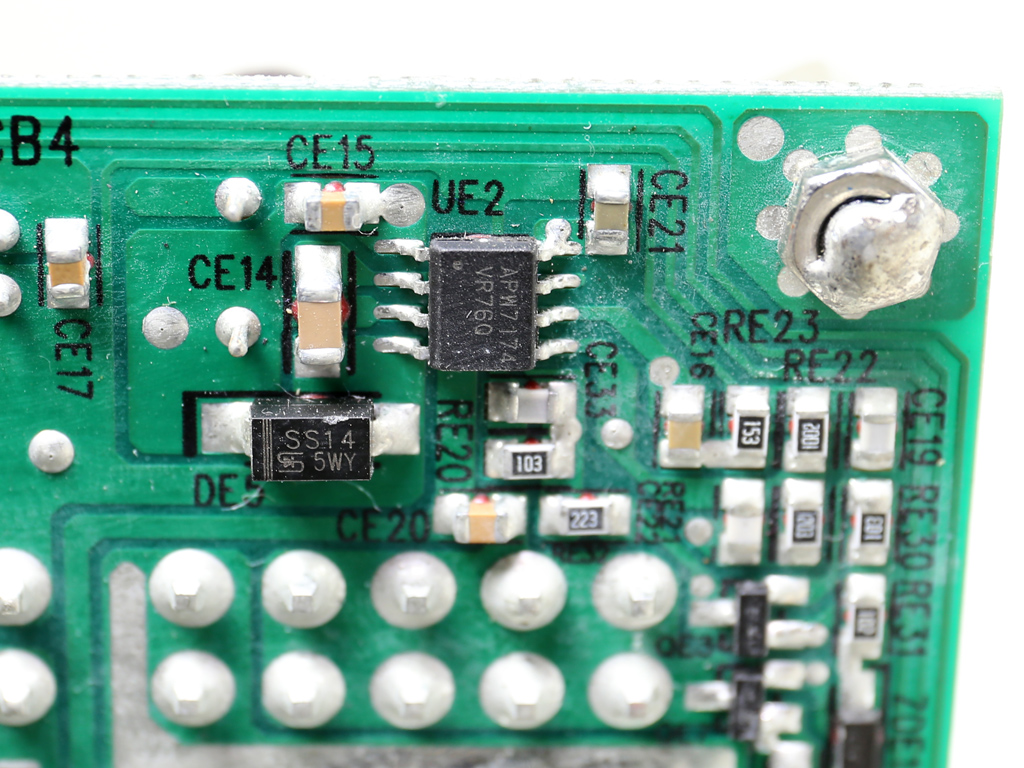In Win Classic Series C 900W PSU Review
In Win's Classic series consists of only two members featuring 750 W and 900 W capacities. The C900 is our test subject today. Besides a great finish and good looks, it promises reliable and quiet operation, along with high efficiency.
Why you can trust Tom's Hardware
A Look Inside And Component Analysis
Parts Description
Before proceeding with this page, we strongly encourage you to a look at our PSUs 101 article, which provides valuable information about PSUs and their operation, allowing you to better understand the components we're about to discuss. Our main tools for disassembling PSUs are a Thermaltronics soldering and rework station, and a Hakko FR-300 desoldering gun.
| General Data | |
|---|---|
| Manufacturer (OEM) | In Win |
| Primary Side | |
| Transient Filter | 6x Y caps, 3x X caps, 2x CM chokes, 1x MOV |
| Inrush Protection | NTC Thermistor & Relay |
| Bridge Rectifier(s) | 2x Shindengen LL15XB60 (600 V, 15 A @ 124 °C) |
| APFC MOSFETs | 2x Infineon IPP60R125P6 (650 V, 19 A @ 100 °C, 0.125 Ω @ 25 °C) |
| APFC Boost Diode | 1x CREE C3D10060A (600 V, 10 A @ 153 °C) |
| Hold-up Cap(s) | 2x Nippon Chemi-Con (420 V, 390 uF each or 780 uF combined, 105 °C, ) |
| Main Switchers | 2x Infineon IPW60R160P6 (650 V, 15 A @ 100 °C, 0.16 Ω @ 25 °C) |
| APFC Controller | On Semiconductor NCP1654 |
| Switching Controller | Champion CM6901 |
| Topology | Primary side: Half-Bridge & LLC Resonant Converter Secondary side: Synchronous Rectification & DC-DC converters |
| Secondary Side | |
| +12V MOSFETs | 4x Alpha & Omega AON6590 (40 V, 100 A @ 100 °C, 1.55 mΩ @ 125 °C) |
| 5V & 3.3V | DC-DC Converters: 8x D528 (GA5G13) FETs PWM Controller: Anpec APW7160A |
| Filtering Capacitors | Electrolytics: Nippon Chemi-Con (105 °C, KY, KZE) Polymers: Nippon Chemi-Con |
| Supervisor IC | Weltrend WT7579 |
| Fan Model | ADDA AD1212DX-A70GL (120 mm, 12 V, 0.13 A, Hypro bearing) |
| 5VSB Circuit | |
| Rectifier | Taiwan Semiconductor TSF20U45C (45 V, 20 A) |
| Standby PWM Controller | Excelliance MOS EM8569D |
| -12V Circuit | |
| PWM Controller | Anpec APW7174 |




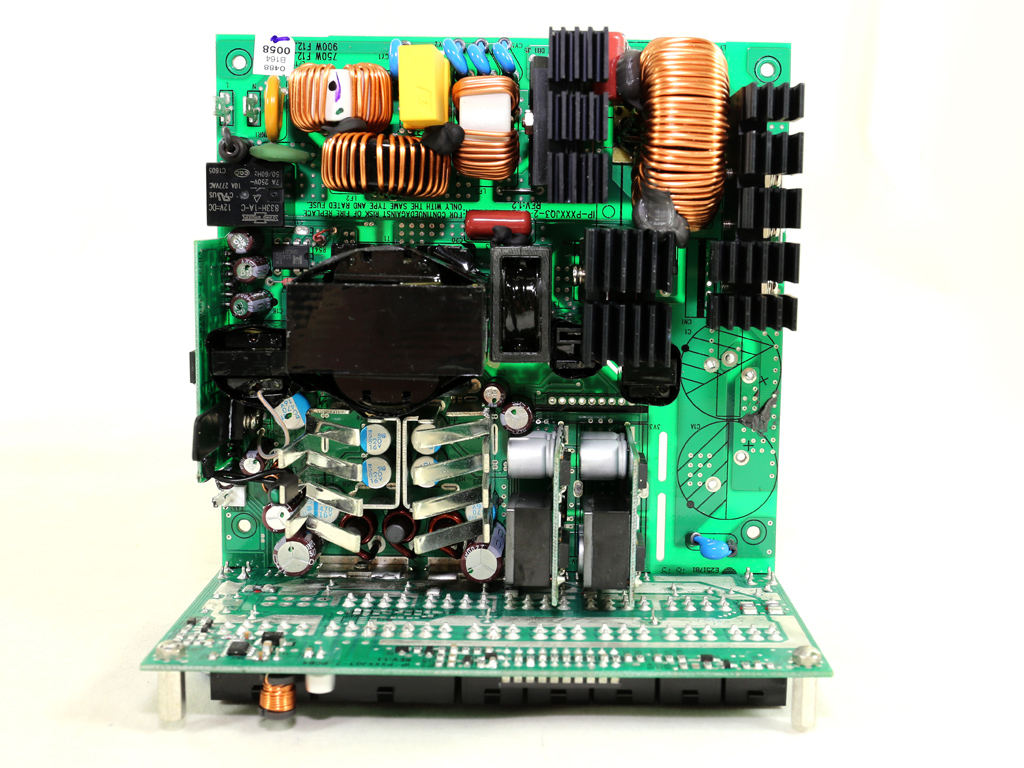
This is an in-house platform for In Win, and besides the modern and clean design, its build quality is quite good. Heat sinks on the primary and secondary sides are pretty small. That's fine though, since Platinum-rated efficiency means they don't have to deal with high thermal loads. The filtering caps are of very high quality, with polymer caps being mainly responsible for filtering the rails instead of electrolytic ones, which are less tolerant of heat and have higher ESR values. A half-bridge topology is used on the primary side, along with an LLC resonant converter for lower losses on the primary switching FETs. Meanwhile, the typical synchronous design is used on the secondary side for regulating the +12V rail; the minor rails are handled by a couple of voltage regulation modules (VRMs). This In Win platform looks like it's on the right path in terms of design and component selection. Of course, our strict methodology and lab-grade equipment will show if its performance can match the tough competition.



Right behind the AC receptacle is the first part of the EMI filter, which includes two Y caps and a single X one. In addition, the power cables are wrapped around a ferrite bead for decreased high-frequency noise. The transient/EMI filter continues on the main PCB with four more Y caps, two additional X ones, and an MOV. As you can see, In Win provides a fully featured EMI filter, though the higher number of components doesn't necessary mean it's more effective. Only the combination of a LISN (Line Impedance Stabilization Network) box and a suitable signal analyzer (SA) could verify the EMI filter's proper operation.


Two high-quality Shindengen LL15XB60 bridge rectifiers are are bolted to a dedicated heat sink. Combined, they can handle up to 30 A of current.

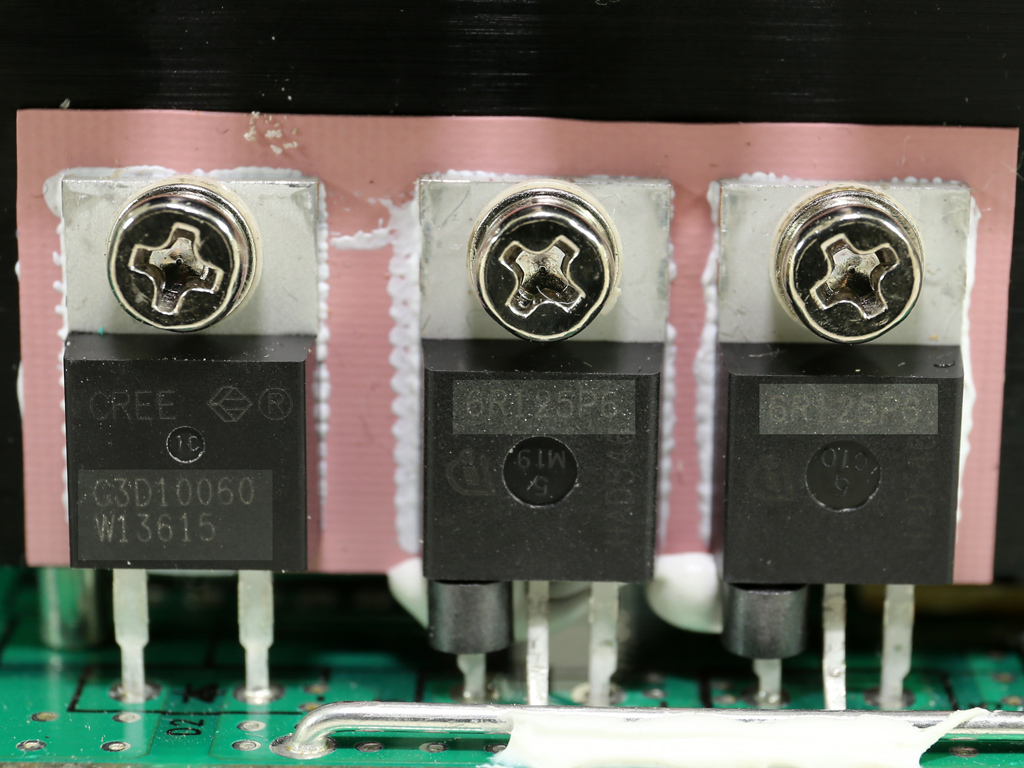

The APFC converter uses two Infineon IPP60R125P6 FETs along with a single CREE C3D10060A boost diode. These are quality parts typically used in high-end PSUs. The bulk caps are provided by Nippon Chemi-Con, and although they are also of high quality, their combined capacity is pretty low for a 900 W PSU.
Despite the low-capacity bulk caps, inrush currents must still be suppressed. An NTC thermistor is used for this purpose, and as you can see in the photo above, it is supported by a bypass relay. We noticed that the relay makes a weird crackling noise if the C900 is shaken. That doesn't make us feel confident in the relay's longevity. We actually have access to three C900s, and all of them exhibit the same behavior under similar conditions.


The APFC controller is installed on a small vertical board. Its model number is NCP1654 and it is provided by On Semiconductor.
Get Tom's Hardware's best news and in-depth reviews, straight to your inbox.


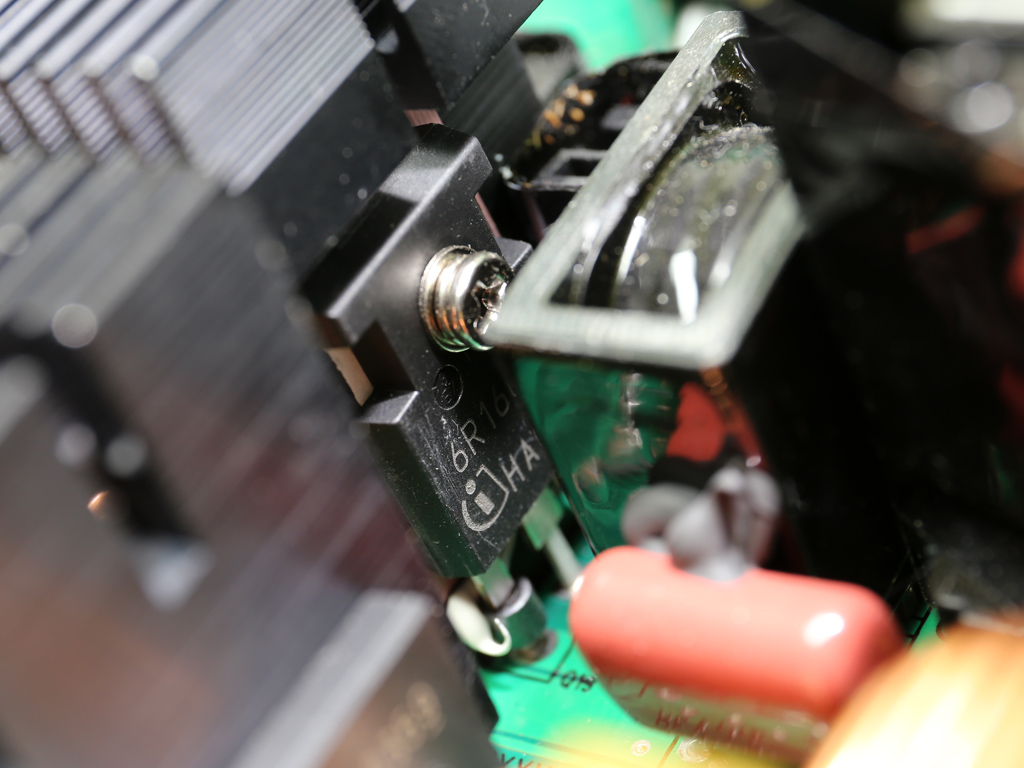
The primary FETs are two Infineon IPW60R160P6s installed in a half-bridge topology. An LLC resonant converter is also used to boost efficiency up to Platinum-rated levels.


The resonant controller is a Champion CM6901 IC, housed on a dedicated board.


The four Alpha & Omega AON6590 FETs that regulate the +12V rail are installed on the PCB's solder side. Besides the heat sinks right above them, their cooling is handled by the C900's aluminum chassis.
We find only one thermistor on the +12V heat sinks. That looks weird since, according to the official specs, over-temperature protection is supported. We are aware that there are SMD thermistors out there, but the bead-type ones are most common for providing temperature information in PSUs.
Nonetheless, we discovered (with the help of a heat gun) that there is either no OTP in this platform or it is set way too high to be useful.



A couple of vertical boards host the VRMs that regulate the minor rails. In total, eight D528 (GA5G13) FETs are used, along with two Anpec APW7160A PWM controllers.

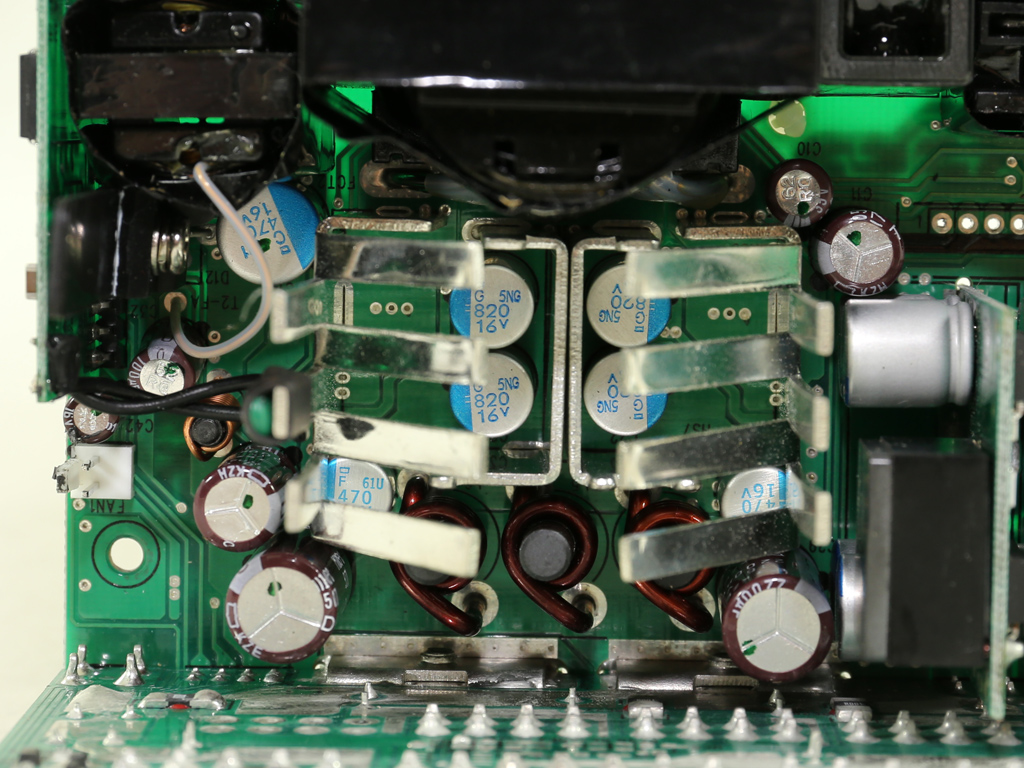
Mostly polymer caps filter the +12V rails, though some electrolytic ones are also used. All caps are provided by Chemi-Con and belong to its KY and KZE lines.


This board, located on the secondary side, hosts an LM393 dual voltage comparator that most likely helps the supervisor IC by monitoring two additional channels/rails.


The 5VSB rail uses a Taiwan Semiconductor TSF20U45C rectifier. The standby PWM controller is a MOS EM8569D IC, sourced by a company called Excelliance. This is the first time we've seen this controller, and we cannot say its performance impressed us.
The -12V rail's PWM controller is installed on the solder side of the modular PCB, and its model number is APW7174.

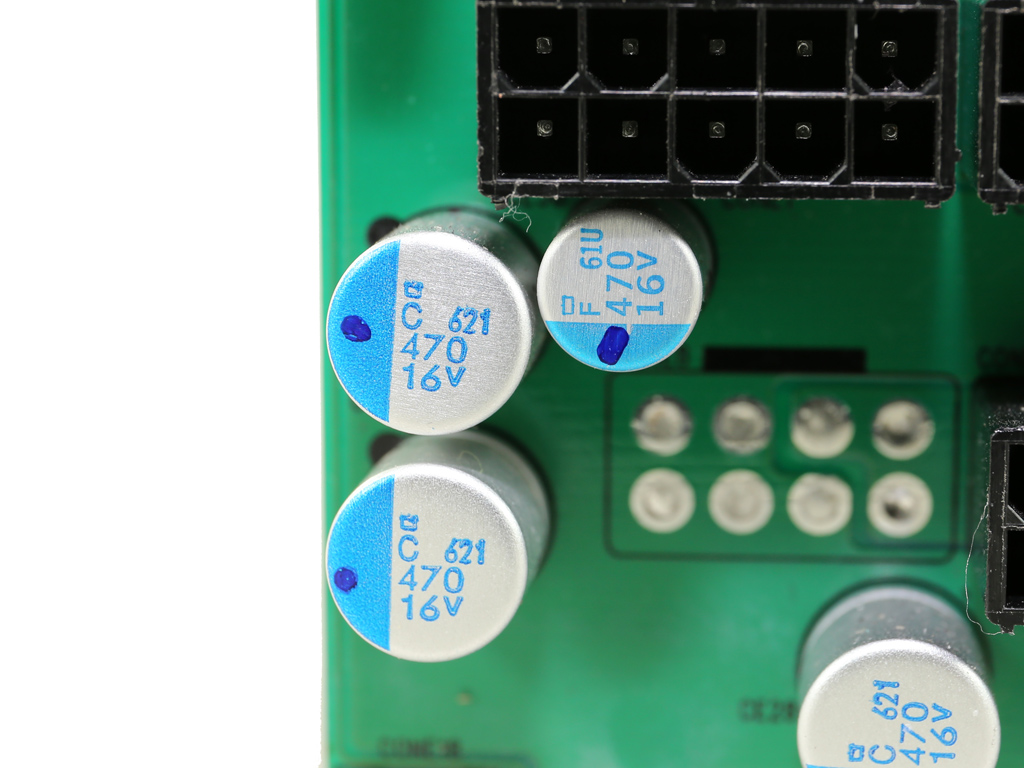
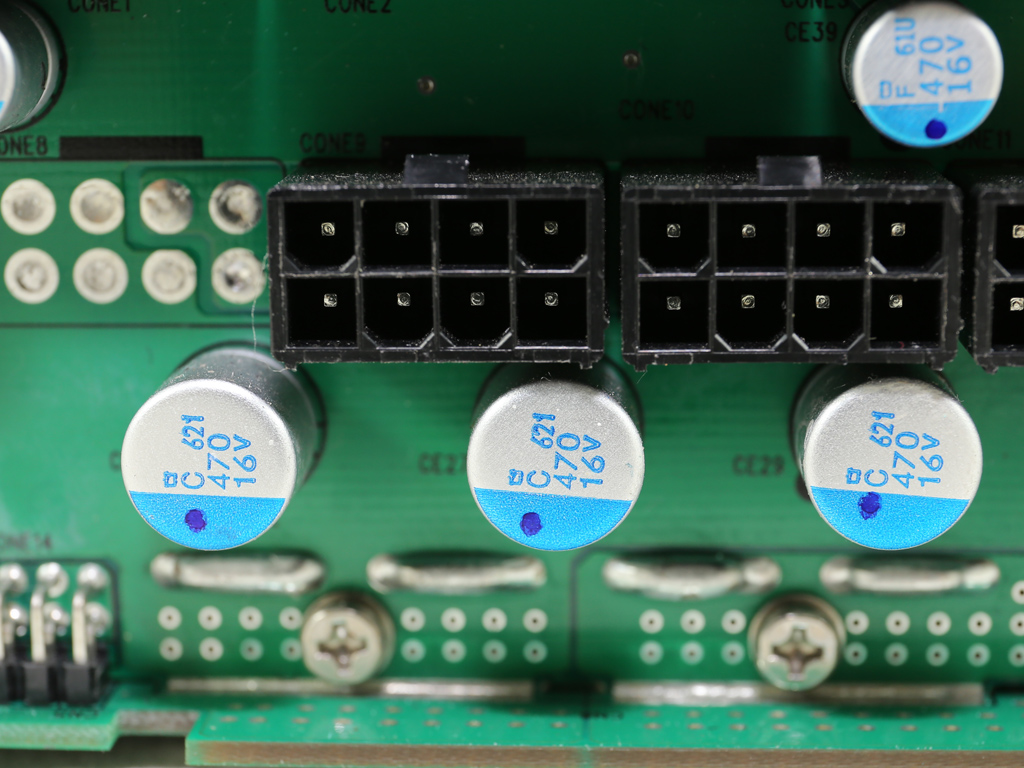



On the front of the modular board we find a number of Chemi-Con polymer filtering caps. In Win paid lots of attention to this unit's ripple filtering performance and the result is pretty good (at least at +12V, the most important rail).
The supervisor IC is installed on the modular board. It is provided by Weltrend and its model number is WT7579. Unfortunately, we couldn't find any information on it. Given its size and number of pins, though, it probably provides more than the most basic protection features.




In Win's soldering quality is really good, and all component leads are carefully trimmed. We only found a couple of leads that were left deliberately long to increase conductivity, since they were bent and soldered onto the PCB's conductive paths. It seems as though In Win's production lines consist of capable wave soldering machines.


The cooling fan is provided by ADDA and its model number is AD1212DX-A70GL. It uses a hypro bearing that, according to its maker, develops a hypro wave in the bearing's center, where the oil reservoir is located. This means the center of the bearing has a lower temperature than its outer surface, promoting the cold to hot flow circulation. Re-circulation of the lubricant and a seal prevent the oil from evaporating, thereby extending the fan's lifetime. Hypro-bearing fans have a lifetime that exceeds 50,000 hours, so at least on paper they last as long as good ball-bearing fans, which are noisier in general.
Current page: A Look Inside And Component Analysis
Prev Page Packaging, Contents, Exterior, And Cabling Next Page Load Regulation, Hold-Up Time, And Inrush Current
Aris Mpitziopoulos is a contributing editor at Tom's Hardware, covering PSUs.


